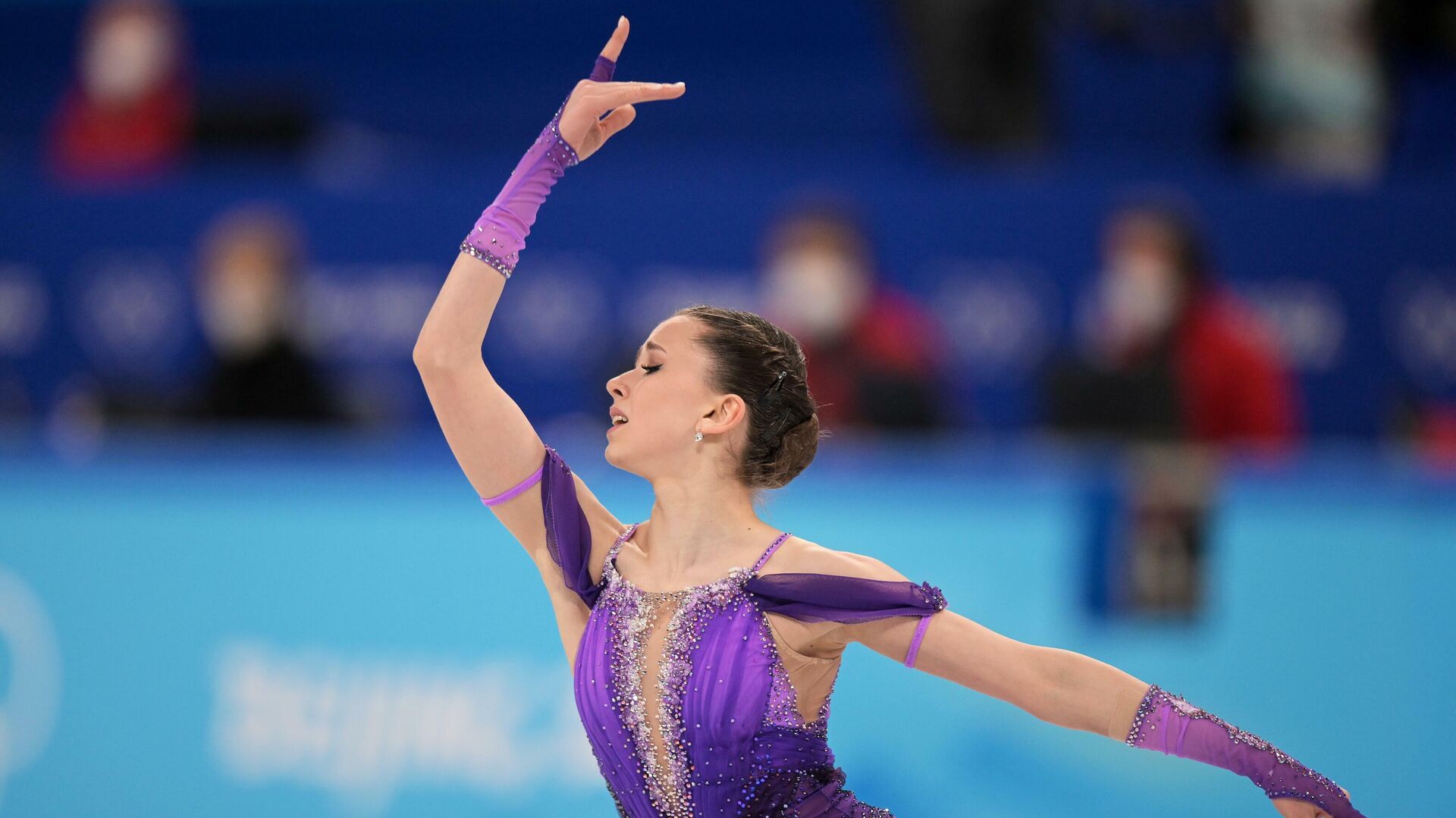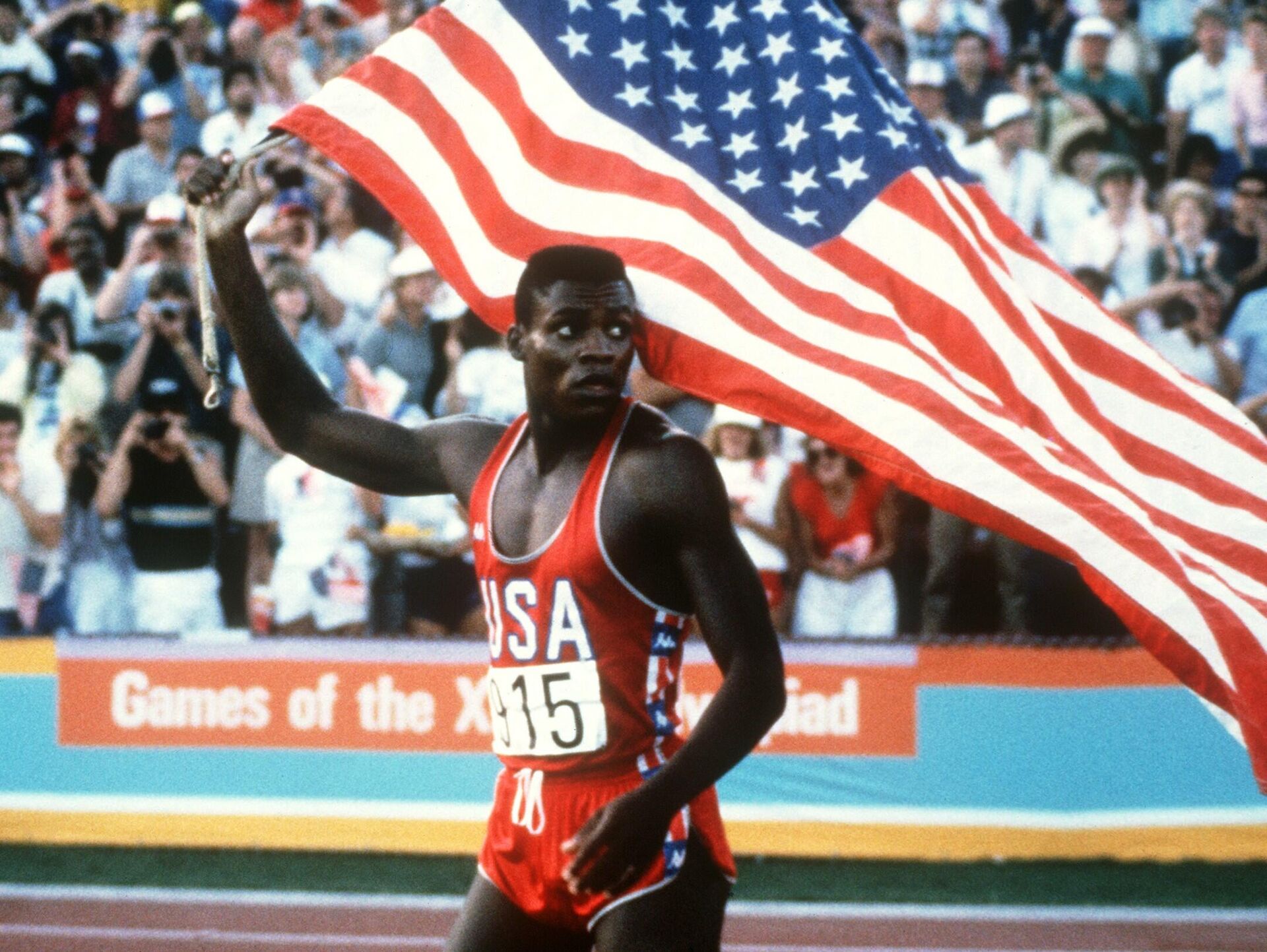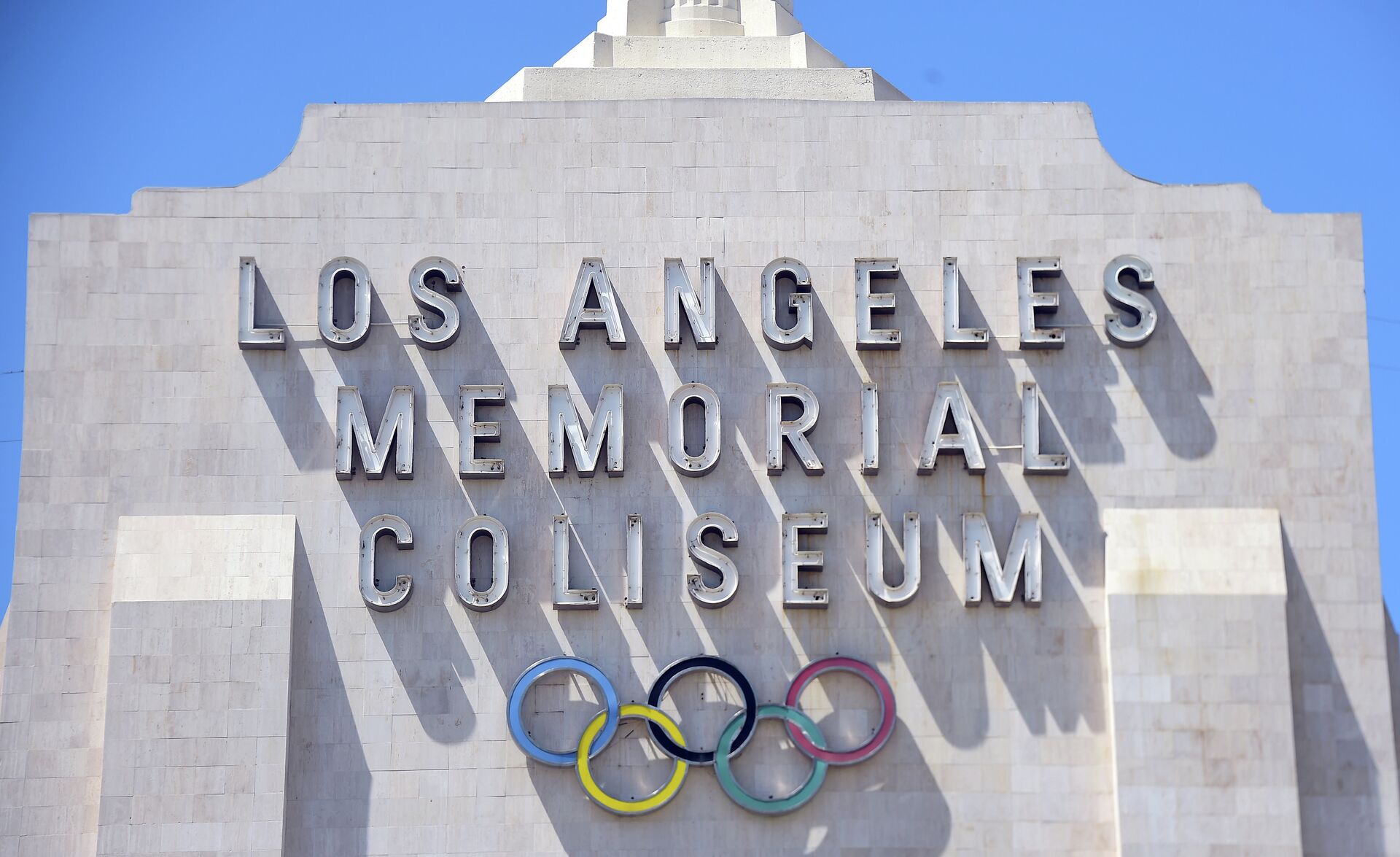US Takes Aim at Kamila Valieva But Did It Forget About The Exum Findings & Case of Carl Lewis?
03:03 GMT 13.02.2022 (Updated: 08:57 GMT 14.02.2022)

© Grigory Sysoev
Subscribe
The controversy surrounding 15-year-old Russian figure skater Kamila Valieva’s positive drug test has gripped the world and has turned the Beijing Winter Olympics on its head. Instead of celebrating the achievements of the world’s best athletes, bureaucrats, media, and lawyers are bickering over who is to blame.
Valieva became the first female figure skater to land a quadruple axel in Olympic competition during the team figure skating event. Her groundbreaking performance helped Russian athletes secure the gold in team figure skating, until Valieva’s December 25, 2021, drug test came to light and put the medal ceremony on ice.
Just mere moments after Valieva landed the first-ever quadruple jump by a woman at the Olympics, reports began to emerge that she had failed a drug test administered well ahead of the Beijing Games. In the days since, the US has led the war path, going so far as threatening Valieva's coaches with prosecution under the Rodchenkov Anti-Doping Act.
The politics surrounding the developments were kicked up a notch when the International Testing Agency, the leading anti-doping agency for the Beijing Olympics, noted in a report that the young skater had failed a test that weeks later showed traces of the banned heart medication trimetazidine.
It has since been determined that the test results, which were only obtained by the Russian Anti-Doping Agency (RUSADA) on February 7, 2022 - the same day of Valieva's winning Olympic performance, were severely delayed after a Swedish lab in Stockholm was backed up with COVID-19 tests.
The Russian Olympic Committee, defending RUSADA’s decision to allow Valieva to compete in the Olympics, stated, "the doping test of an athlete who tested positive does not apply to the period of the Olympic Games. At the same time, the athlete repeatedly passed doping tests before and after December 25, 2021, including while already in Beijing during the figure skating tournament. All the results are negative."
The idea of an Olympic athlete failing a drug test right before or during the Olympics has brought some in the American media to a crossroads. The title of an article by Christine Brennan of USA Today tells you everything you need to know, “Russian Kamila Valieva must be suspended. If not, the Olympics are forever tainted.”
If Christine Brennan can’t stomach the idea of a national Olympic federation allowing one of their athletes to compete following a failed drug test that contains a minor amount of a banned substance weeks before the start of the Beijing Olympics, then she should consider emigrating because her own country - the US - is one of the worst offenders.
USOC's Long Documented History of Cover-ups
The former director of the United States Olympic Committee's (USOC) drug control administration, Dr. Wade Exum, filed two lawsuits against USOC for discrimination in the early 2000s and alleged that the agency knowingly allowed American athletes to compete after failing drug tests throughout the 1980s and 90s.
In his suit, he stated that he believed not “being a team player,” and covering up doping violations led to his dismissal, as well as his race. Exum wasn’t alone in raising concern over the USOC's desire to prioritize athletic excellence over integrity.
His predecessor, Dr. Robert Voy, M.D., the chief medical officer of the USOC from 1983 to 1989, supported his claims and left the agency after seeing how doping violations were buried. He later wrote a book titled “Drugs, Sports, and Politics.”
In it, he wrote, "Based on my experience and expertise, I believe that the USOC and/or the various NGBs, have covered-up evidence of American Olympic level athletes testing positive for banned PEDs (performance enhancing drugs)."
At the time of the allegations, in the early 2000s, the USOC dismissed them as false. Documents provided by Exum revealed that US athletes tested positive for drugs over 100 times between 1988 and 2000, but only a handful were barred from competition.
The USOC claimed that they had valid reasons for the dismissal of their athlete’s positive tests. It’s likely that those athletes' chances of ending up on the podium had something to do with it.
The Case of Carl Lewis

Carl Lewis Raises American Flag at 1984 LA Summer Olympics
© Getty Images
Carl Lewis remains one of the most famous American track and field athletes. The nine-time Olympic gold medal winner was dominant in the 100- and 200- meter sprints, as well as the long jump.
After winning three gold medals in the 1984 Los Angeles Olympic Games, Lewis was among the favorites to repeat in the 100 meters, 200 meters, and long jump at the 1988 Seoul Games. However, prior to the Olympics in 1988, he failed three tests for stimulants found in a cold medication.
Lewis was first disqualified by the USOC but was later reinstated when they accepted his appeal on the basis of inadvertent use. The USOC allowed Lewis to fail three tests the same way and accepted the excuse of inadvertent use.
Years later, in 2003, Lewis said, “There were hundreds of people getting off.” He added, “Everyone was treated the same.”
Lewis wasn’t the only high-profile American athlete to get a pass from USOC. Sprinter Joe DeLoach and tennis star Mary Joe Fernandez also appeared in the documents provided by Exum, whose positive tests were swept under the rug.
DeLoach, the gold medal winner in the 200 meters in the 1988 Olympics, also failed a drug test prior to the games. He too had tested positive for a substance found in cold medication. The International Association of Athletics Federations investigated the matter in 2003 and said his positive test contained a low dosage. The use of cold medication appeared to be popular among elite US sprinters.
Fernandez won the bronze for singles tennis and a gold medal in doubles in the 1992 Barcelona Olympics. Before the 1992 Olympic tennis competition, she tested positive for pseudoephedrine but faced no discipline.
The contents of Exum’s documents spanning from 1988 to 2000 showed that 19 individuals who tested positive but faced no suspensions would go on to win medals.
The issue of the USOC covering up positive tests goes back even further. According to a report from the Orange County Register, 34 American track-and-field athletes tested positive for banned substances before the 1984 Los Angeles Olympics. None of the athletes were disciplined and were instead told to get clean before the games.
When Exum brought to light the USOC’s dirty laundry, few were surprised.
Dick Pound, chairman of the World Anti-Doping Agency from 1999 to 2007, in a telephone interview with the Associated Press in 2003, said of Exum’s accusations, ''It's what many people suspected about the US Olympic Committee, that it was being covered up.'' He added, ''There were lots of rumors around.''
Exum's findings bring to mind the old saying: “the cover-up is worse than the crime."
The USOC Never Faced Any Real Backlash
However, the USOC never faced any consequences over the accusations, and they have largely faded into the background over the past two decades.
Part of the reason the USOC skirted criticism is that Exum’s discrimination complaints never gained legal traction, and the courts determined there wasn’t enough evidence to prove the USOC discriminated against Exum on a racial bias.
While Exum’s claims of discrimination may have been difficult to prove, the evidence he brought to light about the USOC’s practice of protecting athletes with positive doping tests was from their own records. His legal failure had nothing to do with the USOC’s wrongdoing.
All of this raises the question, has the United States Olympic & Paralympic Committee (USOPC) changed?

A worker manouevers is vehicle past an entrance to the Los Angeles Coliseum, which played host to the 1932 and 1984 Summer Olympics, in Los Angeles, California on August 31, 2015
© AFP 2023 / FREDERIC J.BROWN
For two decades, the USOPC has fostered a reputation of protecting athletes with questionable testings, a claim supported by multiple investigations and documents. In the two decades since, there has hardly been a peep. Did they learn their lesson? Or did they simply get better at covering up?
The USOPC, unlike most national Olympic committees, does not receive a consistent annual grant from the government. It instead relies on corporate and individual contributions and on the proceeds of its direct marketing program, predominantly licensing the images of its more successful athletes on cereal boxes and other products.
The USOPC is as much a corporate brand as it is a sports booster. A company that profits off of Americans’ interest in the Olympics, USOPC understands that Americans dominating the medal stands is a good place to start, but so is avoiding scandal. The motivation for the USOPC to hide positive doping tests is coming from all directions.
The United States can finger wag about morality and the true spirit of sport all they want. There is documentation of them spending two decades, from 1980 to 2000, hiding athletes' testing results from the spotlight. Whether or not they’ve done so over the past two decades remains to be seen. With the number of medals stripped from their athletes, professional baseball’s own steroid reckoning, and the American cultural value of being the best, there’s reason to believe the past 20 years were a lot like the 20 that preceded them. But perhaps, only time will tell?

